On Infinity and Boundaries:
You have to understand that if you have an infinite “expanse” of sameness that is unchanging, and that you (I say ‘you’, but I mean ‘it’ or ‘unknown’ for the time being) cause a Thing to exist from that sameness, if it is to ‘exist’, then it must necessarily be perfectly bounded; and if it is perfectly bounded, then, reciprocally, so too is the ‘infinite’ sameness (which is now clearly not infinite).
This is because of the very nature of Sameness and Difference, being the only forms of existence in the Universe:
Imagine an infinite Othello game board filled with black-side-up pieces. You flip one over to white. That white is still ‘sameness’, but different. Now imagine the rule was that all neighbouring black pieces get flipped as a consequence: What would happen? What would it look like? An ever-growing white Thing (Circle? Diamond?). But the whiteness is still sameness – just like black! – what’s actually happening is the advancement (dilation) of the boundary between black and white – the transformation of black to white; the inversion is growing.
Now, let that process run on for a while. A LONG while. So long that the Universe now looks like unchanging white sameness, infinitely.
There are a few troubles of ‘arbitrariness’ at this point:
- What’s to say your initial unchanging blackness wasn’t in exactly the same scenario?
- White’s expansion will be (if not already) infinite because there are infinitely-many black pieces to flip.
- At what point do we finally recognize that they’re both infinite and therefore nothing’s happening?
- Who’s to say its “expanding?” Why shouldn’t its ‘size’ remain ‘fixed’ also, and instead it’s the othello pieces which are getting smaller? – That could be seen like ‘getting higher and higher resolution’ (for a screen) – or ‘space’ expanding ‘inwards’. “Size” of white or black is meaningless or utterly relative/arbitrary.
- If we were to ‘lock our camera’ onto the expansion, where it becomes the new ‘fixed point’ and white and black are ‘happening’ on either side of it, What of Time? Remember:
- This is ‘the Universe’.
- Both white and black are infinite and ‘happening’ simultaneously.
- How long has this process been running?
- Is it still running?
- Which is Past and which is Future?
- Even though the ‘expansion front’ or ‘boundary’ is distinguishing black from white, something else has to happen, because this is the new ‘unchanging sameness’ where all that ‘is’ is black and white. Time loses meaning without continual, ‘layered’ changes: i.e. recursive change.
***
Arbitrariness of “Inside” and “Outside”: An extreme example.
Consider soap bubbles as spaces (referring to the Things in my ‘adjacency theory’ so far), or rather, the other way around – spaces being represented by soap bubbles.
Imagine one bubble “inside” another so that they aren’t touching.
The ‘Western’ mind would think that the one “inside” is “inside”. The ‘Eastern’ mind would see that too, but could also argue that it is arbitrarily also “outside” in that the air “inside” is being “shut out” from the air that is “inside” the “outer” bubble:
Now, slide the “inner” bubble so that its boundary merges with the “outer” bubble:
What’s the difference between the diagram above and the one below?
Or this one?
Or this?
Or, finally, this?
Here the “outer” and “inner” bubbles have switched places!
Now, imagine those bubbles grew to the size of the Universe:
And then:
And:
And, finally:
A Universe inside a bubble…
This is the kind of ‘strange and relative thinking’ I’ve been doing… (right now, I’m hearing Nicholas Cage’s “Face… off!”, but as “Inside… out!” ha ha!)
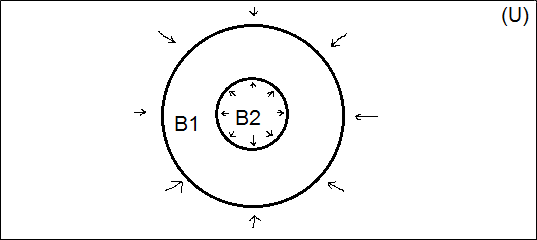
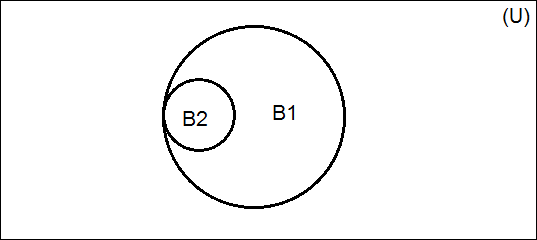
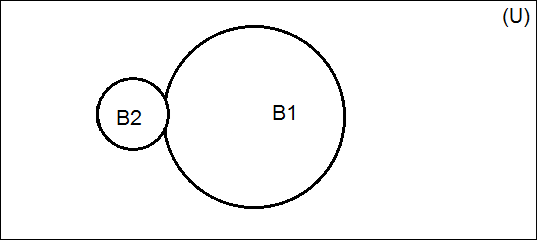
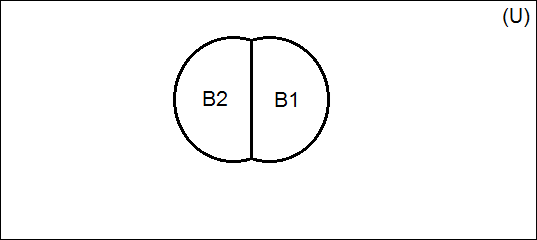
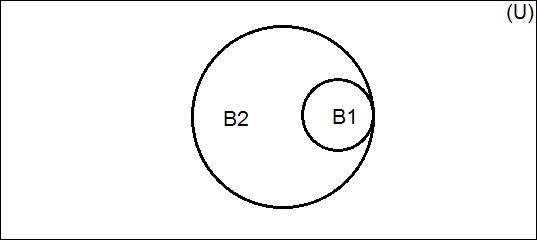
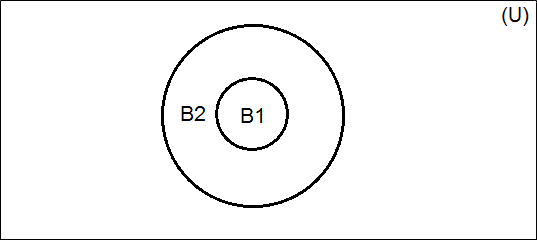
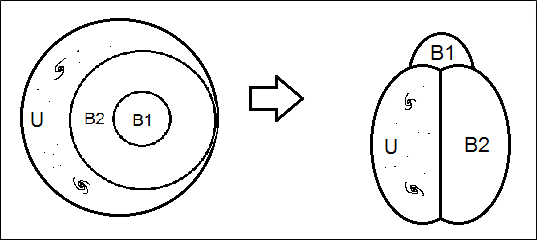
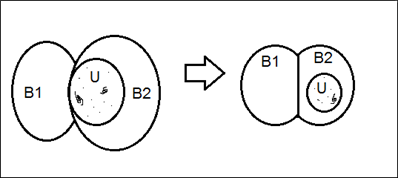
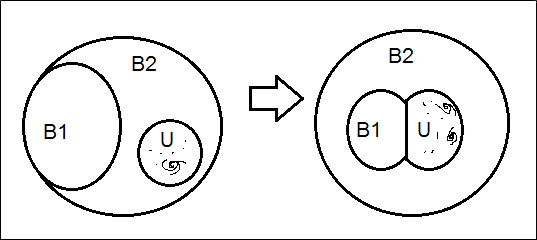
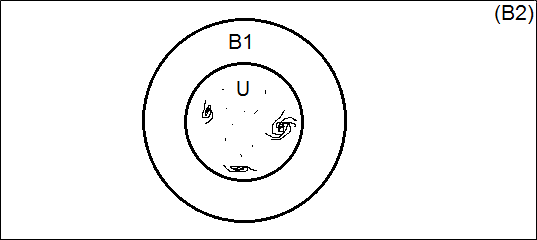
May I ask what you think of the idea of physical laws? (as the concept is defined by Feynman and Davies and paraphrased on https://en.wikipedia.org/wiki/Physical_law?)
If a physical law ceased to apply, we’d naturally ask, ‘and what made that happen?’
As far as I can see, the cessation of the law was either caused by some other law, or was an irreducibly random occurrence.
Is it possible that what we understand to be examples of physical laws are the necessary output of a random generation process – like rolling a dice, some numbers necessarily come up more than others?
And what does it mean for something to be irreducibly random? I think it means that it was caused by nothing. It would happen as it did regardless of events prior or after. A funny thing is that the shape of some object in the macroscopic world can be changed radically by the objects in spacetime that sit around it. If we move some objects around in my room, for example, the shape and composition of unoccupied air in my room changes from what it was. Maybe the ‘irreducibly random’ movements of electrons are the only things that are constituted independently of things around them.
(There are other mindbending logical possibilities, like that it was caused by something that succeeded it in time
LikeLike
Hi Eilish!
Wow. Um… I have to admit I haven’t really thought about ‘physical laws’ themselves, but it would seem to me that if what you said:
were the case, then that wouldn’t fit the definition of “Law” and so what you said can’t work. A “Law” would be more like the fact that there are numbers on the die, rather than the fact that one number crops-up more than another.
I’m afraid I don’t follow the rest of your comment, and it seems like it was cut short?
Best,
Tom
LikeLike